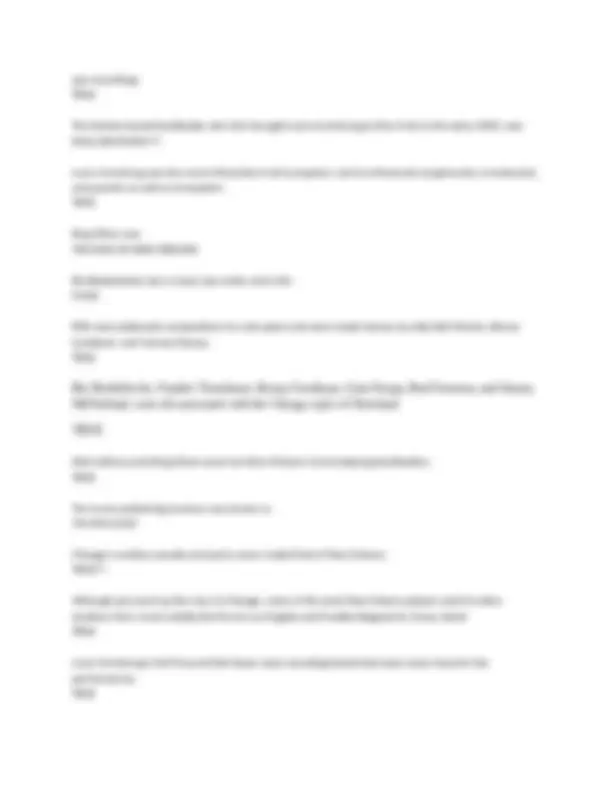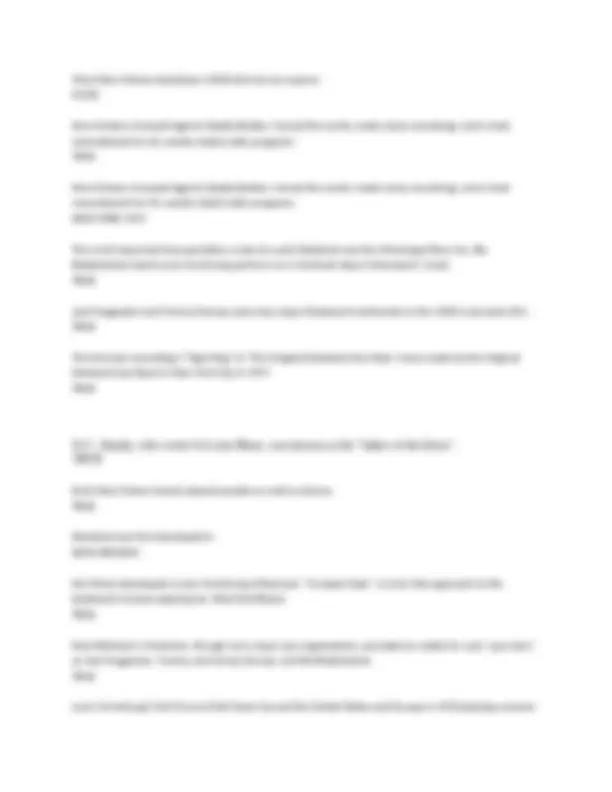





Study with the several resources on Docsity

Earn points by helping other students or get them with a premium plan


Prepare for your exams
Study with the several resources on Docsity

Earn points to download
Earn points by helping other students or get them with a premium plan
Community
Ask the community for help and clear up your study doubts
Discover the best universities in your country according to Docsity users
Free resources
Download our free guides on studying techniques, anxiety management strategies, and thesis advice from Docsity tutors
The differences between new orleans and chicago dixieland jazz, focusing on influential musicians, bands, and recording history. Topics include the roles of louis armstrong, sidney bechet, king oliver, and bix beiderbecke, as well as the impact of radio and recordings on jazz popularity.
Typology: Exams
1 / 5

This page cannot be seen from the preview
Don't miss anything!




The first great white jazz improvisor was BIX The Austin High Gang was a Capone style group of mobsters on Chicago's near north side. FALSE New Orleans born Sidney Bechet's soprano saxophone recordings were know for his rich tone and heavy vibrato. TRUE King Oliver's Creole Jazz band is famous for its recordings of "classic" jazz. TRUE?? The rhythm section of early Dixieland was made up of banjo tuba drums The New Orleans composer/pianist/band leader who had claimed to have invented jazz was JELLY ROLL MORTON Louis Armstrong was both a great jazz trumpeter and jazz/blues vocalist. TRUE Louis Armstrong and Jack Teagarden were respected Blues Singers. TRUE The blues is seldom performed by either type of (N.O. or Chicago) Dixieland ensemble. FALSE
In 1924 Louis Armstrong joined Fletcher Henderson' Band at New York's Roseland Ballroom and made a series of recordings backing such Blues singers as Bessie Smith. TRUE New Orleans Dixieland was an ensemble folk music featuring collective improvisation. TRUE???? The trumpet (playing the melody), clarinet (playing a countermelody and creating momentum), and trombone (to clarify the changes, pointing out the direction the music was going)have basically the same specific roles to play in both New Orleans and Chicago Dixieland. TRUE???
The Austin High Gang came from CHICAGO
Chicago style ensembles often added a saxophone, used string bass and had a ragtime influenced 2-beat feel in the rhythm section. TRUE The 1924 Paul Whiteman's four hour concert at New York's Aeolian Hall, "An Experiment in Modern Music", premiered George Gershwin's "Rhapsody in Blue". TRUE Dixieland jazz is sometimes called "classic" jazz. TRUE
King Oliver was a New York born pianist known as both a Ragtime and Dixieland innovator. FALSE 1926 saw the introduction of the Amplivox (juke box) and "talkies" (sound in movies). TRUE Joe Venuti and Eddie Lang's recording of "Farewell Blues" featured jazz greats Jack Teagarden and Benny Goodman. TRUE Louis Armstrong's recordings with the Hot Five and Hot Seven are among the most highly respected of
Most New Orleans bands(pre 1920) did not use a piano. FALSE New Orleans trumpet legend, Buddy Bolden, toured the world, made many recordings, and is best remembered for his variety styled radio programs. TRUE New Orleans trumpet legend, Buddy Bolden, toured the world, made many recordings, and is best remembered for his variety styled radio programs. NEW YORK 1917 The most important transportation route for early Dixieland was the Mississippi River (ex. Bix Biederbecke heard Louis Armstrong perform on a riverboat stop in Davenport, Iowa). TRUE Jack Teagarden and Tommy Dorsey were two major Dixieland trombonists in the 1920's and early 30's. TRUE The first jazz recordings ("Tiger Rag" & "The Original Dixieland One Step") were made by the Original Dixieland Jazz Band in New York City in 1917. TRUE
Early New Orleans bands played parades as well as dances. TRUE Dixieland was first developed in NEW ORLEANS Earl Hines developed a Louis Armstrong influenced "trumpet style" ( a horn-like approach to the keyboard) of piano playing (ex. West End Blues). TRUE Paul Whitman's Orchestra, though not a major jazz organization, provided an outlet for such "jazz stars" as Jack Teagarden, Tommy and Jimmy Dorsey, and Bix Biederbecke. TRUE Louis Armstrong's Hot Five and Hot Seven toured the United States and Europe in 1918 playing concerts
and dances. TRUE